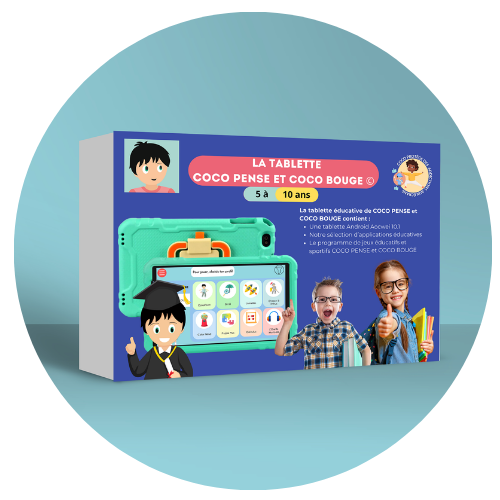Attention Deficit Hyperactivity Disorder (ADHD) is a neurodevelopmental condition that affects millions of children and adults worldwide. It is characterized by a persistent pattern of inattention, impulsivity, and hyperactivity, which can significantly interfere with daily life. ADHD is not simply a collection of symptoms but a complex disorder that influences a person’s behavior, emotions, and cognitive functioning. These symptoms can make academic, social, and professional environments particularly challenging for individuals with ADHD. However, with proper support, treatment, and management strategies, those with ADHD can learn to navigate these challenges and lead successful, fulfilling lives.
1. Difficulty Focusing and Maintaining Attention
One of the primary symptoms of ADHD is difficulty with attention and focus. People with ADHD often find it challenging to stay focused on tasks that require sustained effort, particularly those that are boring or uninteresting. This is especially true for children in school, where they may struggle to listen in class, follow instructions, or complete assignments. These struggles can lead to incomplete tasks, misunderstandings, and poor academic performance, potentially affecting a child’s self-esteem.
Strategies to Improve Focus:
- Break Tasks into Smaller Steps: Breaking larger tasks into manageable pieces can help children avoid feeling overwhelmed. This can make tasks more achievable and allow for regular progress checks.
- Use Timers: Timed intervals, such as working for 10 or 15 minutes followed by a short break, can help maintain attention and avoid frustration.
- Minimize Distractions: Create an environment that minimizes distractions by reducing noise, turning off unnecessary electronics, and having a dedicated workspace.
- Use Visual Aids: Tools such as color-coded notes, diagrams, or sticky notes can help children process and retain information more effectively.
2. Impulsivity and Decision-Making
Impulsivity is another key characteristic of ADHD. Children and adults with ADHD may make quick decisions without fully considering the consequences, leading to actions that may be risky or socially inappropriate. Impulsivity can manifest as interrupting others in conversations, acting without thinking, or engaging in spontaneous behavior that may be harmful.
Techniques to Curb Impulsivity:
- Pause Before Acting: Encourage children to pause and take a deep breath before responding or acting. This can help them evaluate the situation and think about their actions.
- Consider Consequences: Teach children to ask themselves, “What might happen if I do this?” This practice helps them evaluate the consequences of their actions.
- External Input: Suggest seeking advice from a trusted adult or friend before making a hasty decision.
- Mindfulness: Mindfulness exercises can improve impulse control. Apps designed for children, or practicing meditation, can help improve self-awareness and focus.
3. Hyperactivity and Restlessness
Hyperactivity, characterized by excessive movement and restlessness, is another hallmark of ADHD, particularly in children. Children with ADHD may have difficulty sitting still for long periods, constantly fidgeting, or talking excessively. This can lead to difficulties in class or at social events, where sitting still is often required.
Ways to Channel Excess Energy:
- Physical Activity: Encourage children to participate in sports or physical activities such as running, swimming, or dancing. Regular physical activity can help release pent-up energy and improve focus.
- Stress-Relief Toys: Using fidget toys, such as stress balls, fidget spinners, or textured cubes, can help channel restlessness in a constructive manner.
- Frequent Breaks: For activities that require sitting, such as homework or meetings, build in frequent breaks to allow children to move and reset their focus.
- Relaxation Techniques: Deep breathing, progressive muscle relaxation, or guided imagery can help calm the mind and body, improving focus and reducing restlessness.
4. Forgetfulness and Disorganization
Forgetfulness and difficulty staying organized are often seen in individuals with ADHD. Misplacing items, forgetting appointments, and losing track of responsibilities can increase stress levels. Additionally, poor organization skills can impact the ability to manage multiple tasks simultaneously.
Tips for Organization and Memory:
- Daily To-Do Lists: Create a checklist of daily tasks. Breaking tasks down into specific steps helps children stay on track and provides a sense of accomplishment as they check off items.
- Visual Reminders: Use color-coded notes, pictures, or charts to aid in organizing thoughts and tasks. Having visual reminders in a visible location, such as on a bulletin board or whiteboard, can be a powerful tool.
- Establish Routines: Developing consistent routines, such as packing a school bag at the same time each day or using the same spot to leave keys, can improve memory and reduce forgetfulness.
5. Difficulty Completing Tasks
Many individuals with ADHD have trouble completing tasks, particularly those that require sustained concentration. This can lead to procrastination, as the individual may avoid tasks that feel overwhelming. This lack of task completion may result in low academic or professional performance, contributing to feelings of frustration.
Strategies to Help with Task Completion:
- Break Tasks into Smaller Parts: Large projects can be broken down into smaller, more manageable chunks, making them feel less daunting and more achievable.
- Use a Reward System: Set up a reward system where a child earns small rewards (such as a sticker or a small treat) for completing specific tasks or achieving milestones.
- Seek External Support: A coach, tutor, or therapist can provide extra guidance and support, offering strategies tailored to a child’s needs.
6. Restlessness and Fidgeting
Restlessness is another common symptom of ADHD, often manifesting as constant movement even when stillness is required. Children with ADHD may have difficulty sitting quietly, and they might feel compelled to move, tap, or fidget throughout the day.
Suggestions to Reduce Restlessness:
- Frequent Breaks: During activities that require sitting, encourage regular breaks where children can stand up, stretch, or walk around.
- Use Fidget Toys: Fidget spinners or other tactile toys can help children manage their restlessness discreetly without disturbing others.
- Progressive Relaxation: Techniques like deep breathing exercises or progressive muscle relaxation can help reduce physical tension and calm the body.
7. Time Management and Planning
Time management can be a significant challenge for individuals with ADHD. Children often struggle to estimate how long tasks will take, stay on schedule, and meet deadlines. Without good time management skills, they may feel overwhelmed and stressed.
Time Management Strategies:
- Use a Planner: Encourage the use of a planner or calendar where children can write down homework, activities, and appointments. This helps them stay organized and anticipate upcoming deadlines.
- Divide Tasks: Break down tasks into smaller, more specific steps and estimate how much time each one will take. This makes it easier to gauge the time needed for completion.
- Prioritize Tasks: Teach children how to prioritize tasks by importance and urgency. Help them focus on what needs to be done first, so they don’t become overwhelmed.
8. Lack of Motivation and Initiative
Children with ADHD may appear unmotivated, especially when faced with tasks they find boring or overwhelming. This lack of motivation may not reflect a child’s true potential, but rather a symptom of the ADHD disorder. These children may struggle to initiate tasks and need extra encouragement to get started.
Tips to Encourage Motivation:
- Simplify Tasks: Break tasks down into smaller, more manageable steps. This makes the task feel less intimidating and helps build momentum.
- Positive Self-Talk: Encourage children to use positive reinforcement and self-talk to motivate themselves. Teaching them to recognize their own progress and successes helps build self-confidence.
- Set Achievable Goals: Help children set small, realistic goals and reward them when these goals are achieved. This provides them with a sense of accomplishment and encourages continued effort.
9. Social Difficulties
Social challenges are common for individuals with ADHD. Children may have trouble understanding social cues, maintaining conversations, or interacting with peers. Impulsive behaviors, such as interrupting or blurting out thoughts, can strain relationships and affect a child’s social standing.
Strategies to Improve Social Skills:
- Active Listening: Teach children the importance of listening to others and responding thoughtfully. Practicing active listening can help improve communication and reduce misunderstandings.
- Join Clubs or Groups: Encourage children to participate in social clubs or groups where they can interact with peers in structured settings. Shared interests provide a natural way to build friendships.
- Therapy and Social Coaching: Social skills training or working with a therapist can provide children with tools to improve their interactions and build stronger social connections.
10. Emotional Instability and Low Self-Esteem
Living with ADHD can affect a child’s emotional well-being. Due to the challenges they face, children may experience feelings of frustration, inadequacy, or low self-esteem. This emotional instability can make managing other aspects of ADHD more difficult.
Ways to Improve Self-Esteem and Emotional Stability:
- Encourage Self-Care: Teach children the importance of taking care of their bodies through regular exercise, balanced nutrition, and sufficient sleep. These habits help improve mood and cognitive function.
- Therapy and Support: Professional support, including therapy, can provide children with tools to manage emotional challenges and build coping strategies.
- Mindfulness Practices: Mindfulness exercises, such as meditation or deep breathing, can help children develop emotional control, reduce anxiety, and increase self-awareness.
ADHD is a complex and multifaceted disorder that affects many aspects of a person’s life. However, with the right tools and support, individuals with ADHD can thrive in academic, social, and professional settings. By employing strategies for focus, organization, self-regulation, and social interactions, individuals with ADHD can develop a robust framework for success. It’s important to emphasize that ADHD is not .
How useful was this post?
Click on a star to rate it!
Average rating 4.6 / 5. Vote count: 4645
No votes so far! Be the first to rate this post.
We are sorry that this post was not useful for you!
Let us improve this post!
Tell us how we can improve this post?




